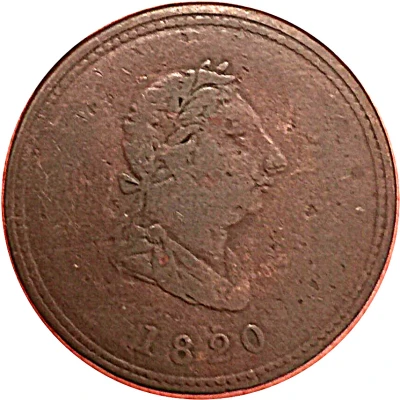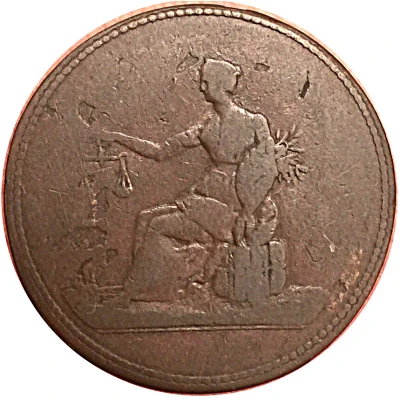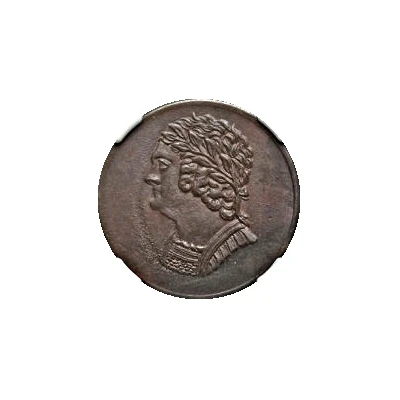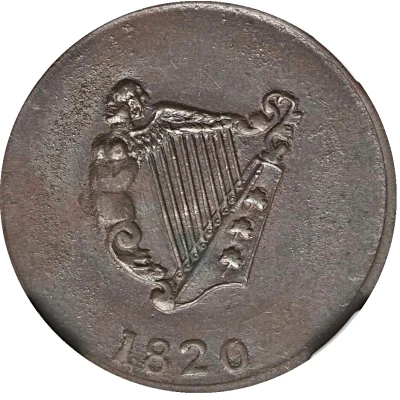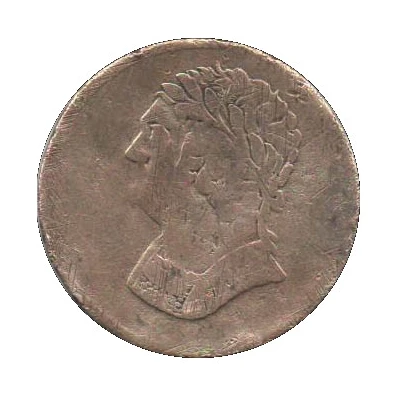
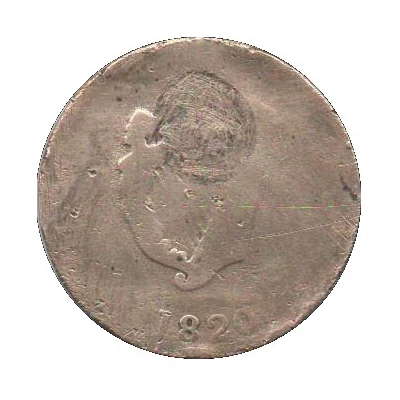

½ Penny Original Bust and Harp
| Copper | 5.6 g | 27.1 mm |
| Issuer | Lower Canada (Canadian provinces) |
|---|---|
| Type | Token |
| Years | 1820-1825 |
| Value | ½ Penny (1⁄480) |
| Currency | Pound |
| Composition | Copper |
| Weight | 5.6 g |
| Diameter | 27.1 mm |
| Shape | Round |
| Orientation | Coin alignment ↑↓ |
| Demonetized | Yes |
| Updated | 2024-10-04 |
| Numista | N#99602 |
|---|---|
| Rarity index | 85% |
Reverse
A harp incorporating the body of a winged female facing left, date below.
Lettering: 1825
Edge
Plain
Comment
Weight: 4.7 - 6.8g
Diameter: 26.3 - 27.9mm
LC-60A1 Date 1825, 6 flaps in cuirass
LC-60A1 Date 1820/5 (0 over 5), 7 flaps in cuirass
Weight: 4.7 - 6.8g
Diameter: 27.4 - 27.9mm
LC-60B Date 1820, 7 flaps in cuirass
In 1825 a halfpenny token was struck in Great Britain on Canadian order even though the currency regulations enacted in 1825 forbade the further importation of private tokens into Canada. However, nothing in the currency regulations interfered with importing tokens dated before 1825. These tokens became very popular with the Irish immigrants of Lower Canada and were soon widely imitated in brass and competed with legitimate colonial coinage for 20 years.
There is great variation in workmanship and weight.
Interesting fact
One interesting fact about the Token ½ Penny (Original Bust and Harp) 1820-1825 from Lower Canada (Canadian provinces) made of Copper weighing 5.6 g is that it was used as a substitute for the official British halfpenny coin, which was scarce in the region at the time. The token was issued by private companies and individuals and was accepted as legal tender in many parts of Lower Canada. Despite its small denomination, the coin has become a highly sought-after collector's item among numismatists today.
